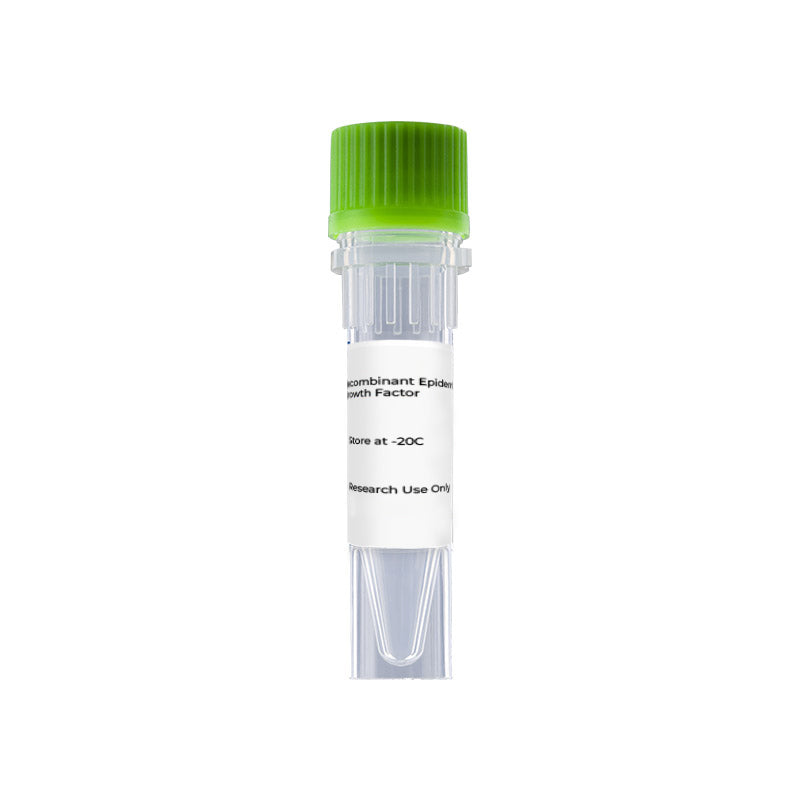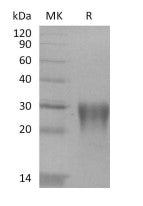1
/
of
2
Recombinant Human LAP (TGF-beta 1)
Recombinant Human LAP (TGF-beta 1)
Recombinant Human Transforming Growth Factor beta 1 is produced by our Mammalian expression system and the target gene encoding Leu30-Arg278(Cys33Ser) is expressed.
Catalog No:
EPT048
Regular price
$159.00 USD
Regular price
Sale price
$159.00 USD
Unit price
/
per
Couldn't load pickup availability
Product Details
Accession
P01137
Molecular Weight
28.5 KDa
Apparent Molecular Weight
20-30 KDa, reducing conditions
Purity
Greater than 95% as determined by reducing SDS-PAGE.
Endotoxin
Less than 0.1 ng/µg (1 EU/µg) as determined by LAL test.
Expression Host
Mammalian
Reconstitution
Always centrifuge tubes before opening.Do not mix by vortex or pipetting.
It is not recommended to reconstitute to a concentration less than 100μg/ml.
Dissolve the lyophilized protein in distilled water.
Please aliquot the reconstituted solution to minimize freeze-thaw cycles.
Shipping Condition
The product is shipped at ambient temperature. Upon receipt, store it immediately at the temperature listed in the Storage field.
Storage Condition and Shelf Life
Lyophilized protein should be stored at < -20°C, though stable at room temperature for 3 weeks.
Reconstituted protein solution can be stored at 4-7°C for 2-7 days.
Aliquots of reconstituted samples are stable at < -20°C for 3 months.
Background
Transforming Growth Factor β-1 (TGFβ-1) is a secreted protein which belongs to the TGF-β family. TGFβ-1 is abundantly expressed in bone, articular cartilage and chondrocytes and is increased in osteoarthritis (OA). TGFβ-1 performs many cellular functions, including the control of cell growth, cell proliferation, cell differentiation and apoptosis. The precursor is cleaved into a latency-associated peptide (LAP) and a mature TGFβ-1 peptide.Disulfide-linked homodimers of LAP and TGF-beta 1 remain non-covalently associated after secretion, forming the small latent TGF-beta 1 complex. Purified LAP is also capable of associating with active TGF-beta with high affinity, and can neutralize TGF-beta activity. Covalent linkage of LAP to one of three latent TGF-beta binding proteins (LTBPs) creates a large latent complex that may interact with the extracellular matrix. TGF-beta activation from latency is controlled both spatially and temporally, by multiple pathways that include actions of proteases such as plasmin and MMP9, and/or by thrombospondin 1 or selected integrins. Although different isoforms of TGF-beta are naturally associated with their own distinct LAPs, the TGF-beta 1 LAP is capable of complexing with, and inactivating, all other human TGF-beta isoforms and those of most other species. Mutations within the LAP are associated with Camurati-Engelmann disease, a rare sclerosing bone dysplasia characterized by inappropriate presence of active TGF-beta 1.
Analyte
TGF-beta 1
Regulatory Status
For Research Use Only



